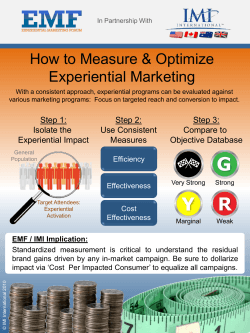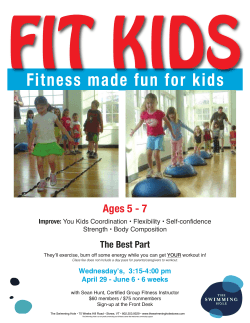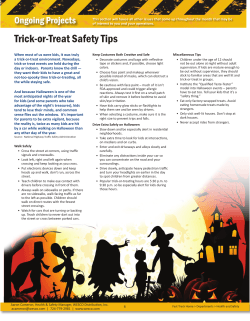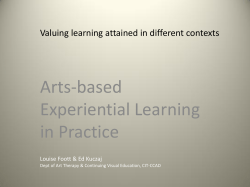
a short-form of this research here
Modern-Day Pragmatism: Individualized, Family-Focused Learning Experiences. A research study investigating the changing landscape of k12 education in the United States. Jon Kolko jon.kolko@blackboard.com Vice President, Design License This work is licensed under Creative Commons Attribution-ShareAlike (CC BY-SA): This license lets you remix, tweak, and build upon this work even for commercial purposes, as long as you credit Blackboard and license your new creations under the identical terms. Please feel free to use this research in your own work. Method and Overview Our team leveraged Contextual Inquiry and Participatory Design, ethnographic research techniques that emphasize what people do and why they do it. During Contextual Inquiry, designers learn from parents and teachers in the context of their work environment, using physical and digital artifacts as prompts for conversation and learning. During Participatory Design, parents and teachers use low-fidelity tools (like images, worksheets, and other artifacts) in order to represent how they feel, how they think, and the workflow they use in their day to day parenting and teaching activities. High Level Summary & Findings Summary The future of k-12 education focuses on experiential learning in This backdrop presents opportunities for individualized learning, the context of a broad support community. The expectation of but also pressures teachers to stretch thin resources across an teachers is changing: knowledge acquisition in the traditional even larger population of student needs. Family is increasingly sense – “I have the knowledge, and I will give it to you” – has involved in learning, but often in a desired oversight role: family eroded in favor of teacher as experience facilitator and content members want to know what’s going on, and share the unique curator. Students explore ideas in a more holistic sense, often needs of their children. While this adds even more overhead to through hands-on activities and with personalized content. The the teacher, they embrace a move toward greater parental teacher becomes a guide for these interactions. inclusion. As a result of this shift, schools are diverging in terms of Many of the benefits of individualized, experiential, familial- pedagogy, and developing unique philosophies – even while influenced education are realized only by the affluent. Lower trying to conform to national or state guidelines. Many of these socioeconomic schools struggle to simply see students attend philosophies embrace ideas like social-emotional learning, class. This divide presents a challenge for well-intended teachers, technological fluency, and student-lead personal growth. This who hope and try to leverage experiential learning to encourage mirrors the pragmatist approach to learning presented by John learning, but who lack any form of meaningful parental support Dewey – that education is “a social institution… The teacher is not or engagement. It also presents a call to action for the larger in the school to impose certain ideas or to form certain habits in community of educators in establishing a more culturally the child, but is there as a member of the community to select inclusive model of learning, one that does not rely on technology the influences which shall affect the child and to assist him in as a silver-bullet for diversity involvement and engagement. properly responding to these influences.” Framing: Individualized It is no secret that individualized learning is effective, as students learn at their own pace and integrate new theory and knowledge in unique, personalized ways. But individualized learning doesn’t scale, making it difficult to realize. Technology alone does little to address the unique needs of each child, but an explosion of open 3rd party learning resources has helped educators curate unique content for individual learners. As a result of changing regulation and an increased awareness of student disabilities, personalized learning pathways are more common. These pathways are delivered by specialists, through an inclusive “push-in” model that brings unique learning into the classroom rather than ostracizing students in programs labeled as “special ed.” When considered together, this presents an opportunity for individualized learning in the context of a community of learners. It also presents new challenges to already overwhelmed teachers, requiring them to either manage an external specialist visiting their classroom, or act as that specialist themselves. Framing: Family-Focused Parents are now a powerful voice and decision maker when it comes to their child’s education. With an increase of educational options, they now can (along with their child) “shop around” to consider the various forms of educational experiences. Community and tools for parent inclusion are key in many parents decisions when it comes to where their children attend school. Technology is introducing new avenues for parental engagement, and these avenues present opportunities and challenges. Parents consider both texting and email as appropriate ways to communicate with teachers. Teachers also often leverage these tools to interact with parents. Parents have a difficult time learning to trust the educational environment, and open communication with educators helps build this trust. But the immediacy of this technology has changes the expectations regarding response-time and interaction frequency. Parents expect faster responses and often over-communicate. Teachers feel pressure to respond, and fear that the line between their private and professional life is eroding. The result is a learning ecology that encourages a family-focused form of education, but places increased and often unrealistic demands on an individual teacher. This creates new opportunities for products, systems, services and policies that help place appropriate boundaries around the near real-time expectations of ongoing communication. Framing: Experiential We are witnessing an increase in experimentation in the context of learning. A variety of language describes these methods, including flipped classrooms, project-based learning, challenge-based learning, and entrepreneurial linked education. The search for the “next learning model” has led to a surge in magnet and private schools, leveraging pedagogy dedicated to their unique flavor of education. While private schools have led this charge, public institutions are now undergoing a similar shift. The common character of all of these academic shifts is towards experience-based learning. Teachers are being “re-professionalized” as facilitators – designers of learning environments. Instead of the old view of the teacher standing at the head of the classroom and imparting knowledge, they are now more closely linked to roles of mentor, coach, or facilitator. This new role focuses on curation based on individual needs, and fostering a supportive learning environment focused on projects and collaboration. Teachers appreciate this shift, as it gives them a chance to be more creative and empowered in developing their curriculum. But this introduces new challenges in conforming with assessment and accreditation guidelines, developing evidence-based artifacts for students to demonstrate their skills, and in managing a constantly evolving course landscape. A Socio-Economic Split The benefit of individualized, family-focused, experiential learning is an ideal not realized by all schools, teachers, and learners. Teachers at many schools need to balance experiential learning with academic testing, but at poorly performing schools (often those in lower socioeconomic communities), the focus of learning is on basic performance metrics. Compounding this testing culture is the perception and reality of disengaged parents. Teachers in these contexts describe finding it difficult or impossible to have any communication with parents at all, and indicate that having a student simply show up in class is a difficult goal to achieve. More optimistically, students in these environments frequently have mobile devices, creating the same open-communication mechanism shared by more affluent students. This creates an opportunity for educators to engage directly with students in a medium and platform they understand and are familiar with. This engagement divide presents a call to action for the larger community of educators in establishing a more culturally inclusive model of learning, one that strives for diversity in involvement and engagement related to experiential learning. Insights An expectation of inclusion has led to personalized learning in a supportive context, but has increased the workload and demands on the individual instructor. 1/ Instead of removing a student from the classroom who “Push-in or inclusion. is where I’m in the classroom during whole is identified as having a learning disability or as gifted, group instruction time, or discussion time. If a student has a there is a push to maintain all levels in a single classroom. While this is important emotionally for the child and for the class as a whole, it poses real learning disability in math, I go in to the math room. We have to meet their needs, to have them in the classroom as much as possible; not leaving, not missing out on access to the curriculum. The individual educational plan has a section called ‘Harmful challenges for the teacher. They must either manage effects of removal’ and we talk to parents about what can happen an outside specialist or handle the unique if their kids leave too much.” circumstances themselves, and must be aware of AR, Teacher, special-Ed (line 34) learners proceeding at different paces. Part of being a good teacher is getting to know your kids, and that is really hard with a class full of students. It takes a long time, and you have to be really deliberate about figuring out what motivates each individual kid. This kid likes this or likes to be told things this way; that is what I want to know. GA, Teacher, English as a Second Language (line 115) Insights The power-dynamic between parents and teachers has shifted, creating new opportunities for family and community, and new challenges for administrators in positioning their school. 2/ As a result of increased school specialization, parents “It’s fairly common to do [school] tours and things like that… a lot have more choice in where their children attend of kids are doing transfers and not going to schools in their school, and can therefore exert pressure over administration to change culture or content. This impacts how the administration describes and neighborhood because there is a better school across town. And a lot of people come here and look. When we were growing up we had our one school and no other choices. If you lived in this zip code, this is where you went to elementary/middle school. You just promotes their school externally. Additionally, didn’t look around. It gets kind of complicated…” experiential learning and a broader content repository NP, Parent of two children (line 28) have given students more autonomy over what they learn. They therefore wield more implicit power over their curriculum. In combination, these changes have shifted the power landscape in schools towards a more “consumer” model of academia. “If Kealing school is something he wants to try for, I'll support it. We'll have to look at that. We went to the magnet choice fair, which they do in December at the Ann Richards school, and all the magnets come, and you can just see the programs…” JB, Parent of two children, (line 110) Insights Teachers enjoy the benefits of content curation and experiential learning, but must continue to juggle this with what they view as the relentless dogma of testing and the menial overhead of paperwork. 3/ Teachers find the current paper based system as “Administrators jobs are on the line based on test scores. antiquated and adding unnecessary frustration and Everybody’s job, since no child left behind, is really based on that stress that bleeds into their personal lives. Additionally, increasing pressure by the state on performance measures has lead to increased focus on testing at data. When we are struggling as a campus to meet the standards, principals are feeling that heat, and it trickles down to us.” AR, Teacher, special-Ed (line 7) younger and younger ages. This is at odds with the “Even in pre-K, there are a lot of assessments. We're always benefits teachers are enjoying through a shift towards assessing four year olds now.. kids are just not ready to.. they're teacher-as-facilitator, where they build experiential not going to get it.” learning environments around curated content. HW, Teacher, low SES (line 7) “They just don't want to be there, period. So we have purchased magazines and comic books in Spanish. The can cut out any article they want, that they like, and they have to read it in Spanish and tell me what it is about.” JT, Teacher, Math & Spanish (line 93) Insights Parents are expecting more interaction with the schools and a holistic picture of how their child is performing – including visibility into emotional wellbeing, happiness, and engagement with peers. 4/ Parents want a full picture of the student, one that is “That is a big problem in schools where I am. There is no close actionable and real-time. They want this full picture to community between parents, kids, and teachers… there is no include both academic performance, but also emotional growth, the establishment of soft skills, and cohesion at all.” JT, Teacher, Math & Spanish (line 204) the way their children are developing peer “But for parents what it’s going to take is our involvement. I mean, relationships. This, in turn, means instructors are nobody knows their child better than their parents. You know how spending more time and attention on these non- your kids learn, so bug the teacher, be in there, be in it, volunteer academic student facets. in the classroom. Know what’s going on. Know who your kids are talking about when they talk about their friends. Supplement at home.” KP, Single Parent, (line 16) “For Imran, we are trying to decide what he is trying to be when he grows up, basically... He is 14.” HD, Single Parent of 3, (line 20) Insights Communication boundaries between parents, teachers and students have eroded, challenging the notion of “appropriate” digital relationships. 5/ As the internet and cellphones change the way parents, “Mark’s teacher is really good about emailing, so that’s where all of teachers, and students communicate, the rules and the communication happens.” expectations governing these interactions are changing, too. Parents are interested in constant communication with teachers, and teachers are NP, Parent of two children (line 50) “There are a few parents I also email, but not many. It's preference. Some have told me to email. Others, usually when I realizing that text messaging with students is the best call a parent, I always ask if I can text this number. Just because its way to ensure a response. This means that all parties faster, I can do it from the class, I don't have to pick up the phone need to negotiate new boundaries related to to do it.” frequency, content, and audience of communication. JT, Teacher, Math & Spanish (line 203) “I don’t friend parents that I’m currently working with. Not that there’s anything on there I don’t want them seeing, but there has to be some kind of professional line. I want to feel connected to the family, that we have good relationships, but the focus should be the student, not what I’m doing in my free time. AR, Teacher, special-Ed (line 56) Insights Experiential learning has changed the role of the teacher, from knowledge-source to experience facilitator. This implies a different set of teaching methods and a different set of educational outcomes. 6/ There is a concerted push towards moving instruction “When we tell parents about the standardized test, they are out of a purely academic pursuit into one of real world thinking ‘my student doesn’t want to sit still, they have sensory relevancy. Schools, teachers, and parents are increasingly tying curriculum and skill sets into needs. How is it going to work?’ It’s concerning for them.” AR, Teacher, special-Ed (line 16) translatable competencies for academic and “Were a big social and emotional learning school...whole child employment readiness. This means that teachers need development.” to become more comfortable with a broader, worldly MN, Principal, elementary school (line 21) set of skills – facilitating a cultural educational space, rather than disseminating knowledge. Teachers often express this shift in terms of making learning “more fun” or “more relevant.” “Sometimes her homework is to watch a PowerPoint presentation on the website. They'll do what they call a flipped lesson, so they'll watch the lesson at home, and then discuss it at school.” JB, Parent of two children, (line 53) Insights The benefits of the changing k-12 landscape are realized only by families in strong socio-economic cultures. This results in a dramatically impoverished learning experience for at-risk students. 7/ In lower socioeconomic schools, the bar for education “Some of these kids see as part of their identity that they don't is low. Teachers see students struggle to even attend speak Spanish and that should not change They actually say, ‘I'm an class or stay awake, and describe that parents in these communities focus on economic sustenance African American. We don't speak Spanish.’” JT, Teacher, Math & Spanish (line 95) (maintaining a job) rather than educational “We I walked up to the school, I saw teachers fighting kids, I saw engagement. Providers of educational solutions need kids fighting teachers, I saw kids being dragged down the hall.” to focus on supporting this population to combat this HW, Teacher, low SES (line 7) educational divide. “There are kids that just don't care. I have several of them, they behave very badly in school. In my class I put them in a side or corner of the room, and as long as they are not disrupting the rest of the room, then that is fine. Those kids they have parole officers. [in 6th, 7th, and 8th grade]. So, I know that I can not expect them to just sit down and merrily write notes.” JT, Teacher, Math & Spanish (line 203) Thanks! Jon Kolko jon.kolko@blackboard.com Vice President, Design
© Copyright 2025










